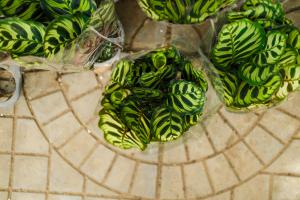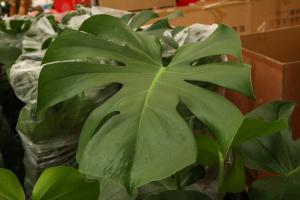Introduction
Plants are a critical part of our ecosystem, and they provide us with food, oxygen, and many other benefits. However, sometimes we need to remove plants from a particular area, and one way to do that is by using salt. Salt can be harmful to plants, and in extreme cases, it can kill them. But how much salt is too much? In this article, we will explore the effects of salt on plants and how much salt it takes to kill them.
The Effects of Salt on Plants
Plants need a certain balance of nutrients in order to grow and thrive. Salt is not one of those nutrients, and in fact, high levels of salt can be harmful to plants. When plants are exposed to high levels of salt, they can experience a variety of negative effects. One of the most common is a reduction in plant growth. Salt can also cause leaf burn, where the edges of the leaves turn brown and die off. Additionally, salt can disrupt the plant's ability to absorb water, which can cause dehydration and ultimately, death.
How Much Salt Can a Plant Tolerate?
The amount of salt a plant can tolerate varies depending on the species and age of the plant. Some plants are more salt-tolerant than others, and some stages of growth are more sensitive to salt than others. Generally, plants can tolerate a salt concentration of up to 1000 parts per million (ppm) in the soil. However, levels above 2000 ppm can start to have negative effects on the plant. At levels above 5000 ppm, most plants will begin to show signs of stress, and some may begin to die off.
How Much Salt Does it Take to Kill a Plant?
The amount of salt it takes to kill a plant depends on a variety of factors, including the plant species, the soil type, and the stage of growth. However, in general, it is safe to say that a salt concentration of around 9000-10,000 ppm is lethal to most plants. At these levels, the salt disrupts the plant's ability to absorb water, which causes the plant to dehydrate and ultimately die.
Conclusion
Salt can be an effective way to remove plants from a particular area, but it is important to use it responsibly. High levels of salt can be harmful to plants, and in extreme cases, it can kill them. To avoid causing harm to the ecosystem, it is important to only use salt in situations where it is necessary and to use it in moderation. By understanding the effects of salt on plants and how much salt it takes to kill them, we can make responsible choices that help to preserve our environment.

 how many times do yo...
how many times do yo... how many planted tre...
how many planted tre... how many pine trees ...
how many pine trees ... how many pecan trees...
how many pecan trees... how many plants comp...
how many plants comp... how many plants can ...
how many plants can ... how many plants and ...
how many plants and ... how many pepper plan...
how many pepper plan...
































